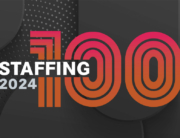By Craig Johnson
Summer traditionally represents a slower time for healthcare staffing; experts say that’s because there are fewer elective surgeries and it’s not flu season. 2013 in particular proved that, but this summer is different.
“The good news for the industry is that demand is up,” says Cynthia Kinnas, president of the National Association of Travel Healthcare Organizations and executive vice president of Randstad Healthcare. “Across the board everybody’s experiencing a record number of orders for traveling nurses this summer. This is due to a variety of factors including not only the ageing population and the continued and growing shortage of nurses, but also on top of that there are a number of EMR conversions in play as well as a record number of hospital construction/expansion projects that require additional staff.”
Overall, the prognosis for healthcare staffing is good. Revenue is forecast to grow 6 percent this year and 8 percent in 2015, according to Staffing Industry Analysts. In addition, there’s room to expand; the industry peaked in 2002 in terms of market size (as measured in 2013 dollars) and it’s currently at about 74 percent of that market size.
There are other trends as well. They include increasing use of vendor management systems and rising requirements pertaining to the use of temporary workers from customers. For example, finger printing workers is a necessity with many clients. In addition, demand for specialties is rising.
Program Models
In the case of VMS, experts are seeing growth across the board.
“There’s definitely a proliferation of VMS, and customer adoption of some sort of third-party system is significant,” says Alan Braynin, CEO of Aya Healthcare, a San Diego-based healthcare staffing firm. “It’s everywhere. We’re seeing it at the larger hospitals, we are also seeing it at the smaller hospitals.”
There’s a variety of VMS, MSP and other third party options, but what’s in common is that more hospitals are bringing in a third party to play a role in vendor selection, rate negotiation or other components of contract labor procurement.
VMS and MSPs became a hot topic at the 2013 Healthcare Staffing Summit — especially over the use of VMS in managing locum tenens providers. Concerns included lower bill rates, lack of transparency and, in the case of MSPs, being forced to work with their competitors. However, VMS and MSP supporters argued such systems could even the playing field among firms, improve payment terms and allow staffing suppliers to sell into large organizations without the need for a big sales force.
Kinnas says she sees a maturing in the healthcare VMS and MSP space and there’s more buyer interest in vendor neutral programs. This includes just using a technology or contract management company, or, if the buyers uses a staffing firm as its MSP provider, the staffing firm distributes requisitions equally among supplier firms in the MSP arrangement. In the past, the vendor neutral model was little used in healthcare. “Now we’re just seeing more of an awareness on the clients’ part of what the difference is; before I don’t think they knew what the difference meant or if there was a difference,” Kinnas says. “Now some are asking for vendor neutral by name.”
“We are seeing more of an awareness on the clients’ part of what the difference is,” Kinnas says. “Before, I don’t think they knew what the difference was or if there was a difference. Now they are asking for it.”
The move to vendor neutrality is good for many suppliers, and with demand for talent so strong, it helps buyers get the best workers in the shortest amount of time. Some programs that aren’t vendor neutral are finding suppliers are less willing to work with them if they are getting the last of the pick of the job requisitions. David Savitsky, CEO of staffing provider ATC Healthcare Services, says he also sees vendor managers such as VMS and MSP providers working more closely with staffing firms. Vendor managers provide staffing buyers with more data, so buyers know if expectations are being met — and that can highlight the need for vendor managers to work with staffing suppliers to get positions filled and objectives accomplished.
“I think there’s a recognition on vendor managers’ part that they’re not going to be able to do it on their own,” Savitsky says. In fact, he has seen rate increases for staffing firms from vendor managers for specific shifts and certain specialties.
Working Together
Kevin Little, president of Boca Raton, Fla.-based Accountable Healthcare Staffing, says staffing buyers are becoming more sophisticated. They are seeing the advantages of working with their providers. As a result, the relationship between staffing buyers and staffing firms is becoming more partnership-oriented.
Earlier, some healthcare buyers would aim to be staffing agency-free. Little says healthcare staffing buyers are now taking a closer look at economics and quality and what is the best allocation of internal staff, float pools and agency staff. “We like to have constructive conversations with clients about what’s the right mix of each,” Little says.
Little also sees the trend for VMS and MSP continuing; Accountable even started its own MSP offering at the beginning of the second quarter.
Compliance Conscious
Another trend Randstad’s Kinnas cites is increased complexity on the compliance side, with buyers requiring more tests and documentation before travelers can start work. A client might require 35 to 40 different items, and even two to three years ago it was just the basics, such as license, physical exam and I-9. Today, clients are requiring more formalized testing, specialty exams and extra background checks with fingerprints. And the new requirements vary by state, client and profession. “You need to have a dedicated unit and somebody constantly staying up-to-date doing the research,” Kinnas says. “The requirements are only becoming more complex, so it’s an important factor for people looking to get into healthcare staffing because if you don’t have it all in order your person cannot work.”
Aya Healthcare’s Braynin says he sees increased demand for nurses with specific charting experience, using electronic medical record systems such as Epic. That demand has risen from years ago.
Hospitals are also requesting travel nurses with previous travel experience.
“One of the challenges is more and more hospitals want people who have prior travel experience and, because the industry’s now in a growth phase, there are nurses interested in travel nursing who don’t have prior travel experience,” Braynin says. “It’s kind of a catch 22, those nurses need to get experience within hospitals that will take them without prior experience and then move to hospitals that want folks with experience.”
Specialization
Some are also seeing specialization in demand.
“There seems to be a marked need for specialty nurses now,” ATC’s Savitsky says. Demand for labor and delivery nurses is strong, as is demand for emergency room and operating room nurses. That may be because they are focusing more on acute care and sending patients to rehab or step-down types of programs.
Nurse practitioners and physician assistants are also in tremendous demand, Savitsky says. In some cases, a medical practice may use a nurse practitioner or physician assistant to replace a retiring doctor. Then the rest of the doctors in the practice can concentrate on being more consultative while the nurse practitioner or physician assistant handles more of the routine work.
The Future
Overall, things in healthcare staffing are on an uptick.
Accountable’s Little says the economy is looking up and fewer people are delaying procedures. “Hospital demand appears to be increasing and their need for partners such as ours is increasing and we hope that’s sustainable.”
Craig Johnson is managing editor at Staffing Industry Analysts. He can be reached at cjohnson@staffingindustry.com.







